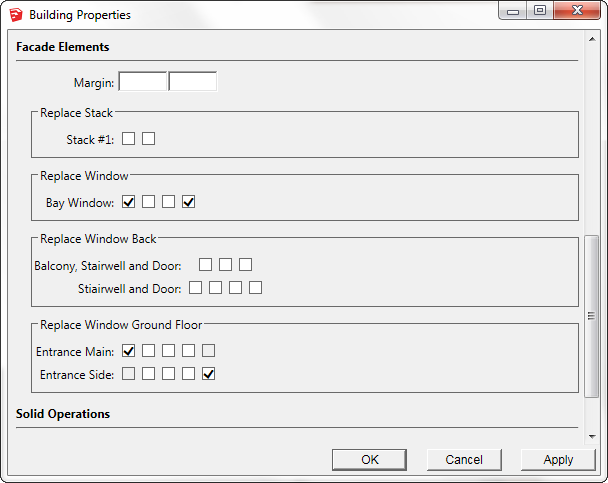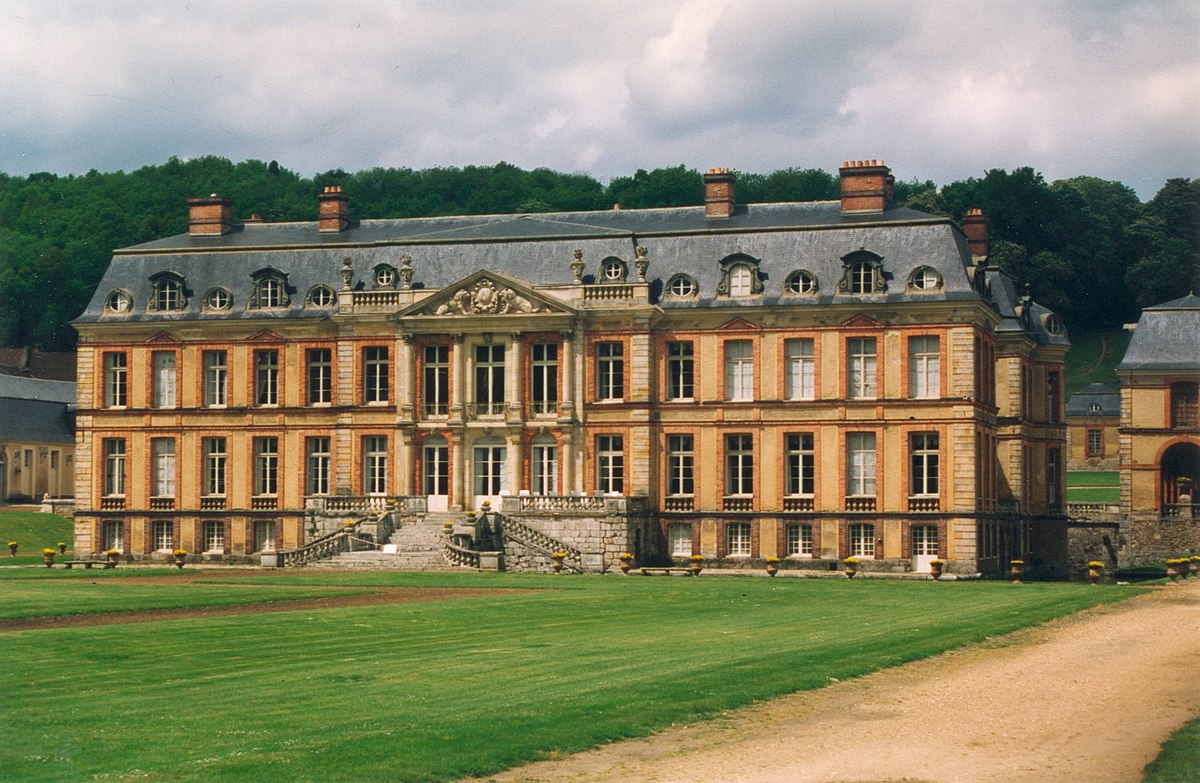Eneroth Townhouse System
-
Searched:
LINK 1
"https://plus.google.com/+ChristinaEneroth/posts"latest post in Google plus was selected and WORKS:
When the above ACTIVE link(S) without parenthesis are selected from this post they DO NOT WORK.
TO VIEW
Copy and past LINK 2 inside parenthesis to your browser (I am using Google Chrome) and the link should work, works for me.Why the above ACTIVE LINKS do not work from this post I do not know, anyone know?
-
As usual it's the Sketchucation forum that just doesn't work properly. The link I've written and the one I see when trying to edit the post is correct. However the link shown in the saved post goes to an internal page, probably to save statistics or something, where users are supposed to be redirect to the actual location. That script replaces the "+" sign with "#%20" because URL encoding and decoding doesn't match up resulting in a faulty link.
Simply put, a bug on Sketchucation's side prevent the link from working even though it's a correct link. Try instead just copying this to your addressbar:
https://plus.google.com/+ChristinaEneroth/posts/J182prPzNhs?pid=6293120779793843890&oid=110985781685543511443 -
This plugin would be the dream of a city planner and architect. A huge time saver in the preparation of roofs over nonperpendicular building corners.
-
How cool is that!
-
The most recent version of the plugin is now live on the Extension Warehouse. Enjoy! http://extensions.sketchup.com/en/node/2341
-
Hi Christina, wellcome back. good news i see. ill try this instantly.
-

Here's a screenshot from the upcoming version. The new replacement method finally allows for some more complex buildings with entrances, bay windows, balconies and other elements that brings life o the facades.
This is how the UI works.
-
Looking great!
-
My Townhouse plugin is now updated.
This is a big release with several improvements to how buildings can be drawn.
SketchUp Extension Warehouse
Your library of custom third-party extensions created to optimize your SketchUp workflow.
(extensions.sketchup.com)
[youtube:2oxuf9sx]http://www.youtube.com/watch?v=nKlRHrDYC5k[/youtube:2oxuf9sx]
Previously the elements on each facade could only be evenly spread across it. Now users can replace specific elements from Building Properties, e.g. a specific window by a door. Some replacements can even take up multiple slots, e.g. a wide bay window.
There's also a gable feature that allows the user to add pre-drawn parts to the short sides of the building. This is typically used to replace the firewall with a facade but can also be used for side risalits/avant-corps or for a rear wing as shown in the video.
Finally there's a corner feature that can be used e..g to add corner turrets.
Enjoy!
-
Eneroth, can we create our own templates?
-
@jql said:
Eneroth, can we create our own templates?
Yes! All the templates hipped with the extension are created with the tools included. Some instructions are included under Extensions > Eneroth Townhouse System > Template Editing > Documentation. I migth also record an example video if I find the time.
If you have any questions or if anything is confusing, feel free to post about it so I can answer and document it better.
-
I didn't try it, but if we can create presets, it's a hell of a plugin! Thanks for sharing it, I will use it eventually!
-
Wow i see awsome features. ok isn´t a parametric building designer, however a good idea.
Sorry Christina i have only 2 thumbs on my hands, i would give more.

-
A little try
![screenshot by yellowdoor_[0001] 2016_08_01_-_20_11_12.jpg](/uploads/imported_attachments/shGg_screenshotbyyellowdoor_00012016_08_01_-_20_11_12.jpg)
-
@all Users on the different continents.
I have begin to work with Eneroth Townhouse System (ETS)
i have here begin with White Blocks with Berlin Roof, and typically roofs like in France (Paris).
i have only find a picture at WIKIpediaI would ask about standard hight and depth. I know that in Paris and Stockholm etc. we have different Buildings.
My intension is to say: " yes this is a typically House in France, Spain,Sweden etc."
Beginning i would in the Capitals of the Countries and than step by step over small towns to villages.In Countries Like Sweden, Norway and Denmark i have a problem to see the difference.
Some times when i watching TV and see Movies with Scandinavian locations i can´t say instantly this is Sweden or Denmark or Norway.please support Christina with your input
Thanks at all
Dean
-
The building depth varies quite a lot. In Sweden up to 15 m was quite normal in the 1910s. 10 m has also been very common and in smaller towns I don't think 8 vas especially unusual.
On this map of my home town you can see how building depth can be vastly different on adjacent buildings, some being twice as deep as the one next door: https://www.google.se/maps/@55.7055163,13.1918988,17.75z?hl=en.
Height has typically been limited by fire regulations. In Sweden, and probably many other European countries, the building height to street width ratio has also been regulated.
Regarding what a typical building is for a specific region I can recommend "Så byggdes husen 1880-2000" for Sweden. It's a book with maybe 20-30 example of very typical Swedish buildings from that time period. Here's an example of what a spread looks like: https://www.google.se/imgres?imgurl=http%3A%2F%2Fimg.tradera.net%2Fimages%2F287%2F231177287_72331872-e835-436c-9e1a-195ba2b9566f.jpg%26amp;imgrefurl=http%3A%2F%2Fwww.tradera.com%2Fitem%2F342300%2F261609940%2Fsa-byggdes-husen-1880-1980-arkitektur-konstruktion-och-material%26amp;docid=-CPH_3nH4damzM%26amp;tbnid=-EfODjQhRdJGuM%3A%26amp;w=1024%26amp;h=768%26amp;safe=off%26amp;bih=973%26amp;biw=1920%26amp;ved=0ahUKEwiu_e3zpazOAhWjdpoKHUugACMQMwggKAUwBQ%26amp;iact=mrc%26amp;uact=8.
If anyone know of a similar book for other regions, please tell me!
-
@unknownuser said:
The building depth varies quite a lot. In Sweden up to 15 m was quite normal in the 1910s. 10 m has also been very common and in smaller towns I don't think 8 vas especially unusual.
Here in DE,too
@unknownuser said:
On this map of my home town you can see how building depth can be vastly different on adjacent buildings, some being twice as deep as the one next door: https://www.google.se/maps/@55.7055163, ... .75z?hl=en.
Nice Town, I love towns with old buildings.
@unknownuser said:
Height has typically been limited by fire regulations. In Sweden, and probably many other European countries, the building height to street width ratio has also been regulated.
Yes in Berlin ,too. At the end of the 19th century to the begin of the 20th century the "Traufhöhe" (the hight to the roof edge) is 22m and the street wide is 22m, too (is an old regulation)
here the picture with the german words (blue is Trauf > cullis/eaves)
@unknownuser said:
In many discussions on the topic of living or for other construction projects in my own constituency which keeps popping up term Berlin eaves height ' on. Short resolution: the 'Berlin eaves height' regulates that Comenius or Rudolf neighbourhood in my constituency, most homes to a maximum height of 22 meters are limited in many Berlin old quarters, which were built at the beginning of the 20th century, approximately in the Boxhagener. Upon my request on this issue in the Senate Department for urban development and environment I has received comprehensive information available, which I love to publish this map:
In relation to the emergence of the 'Berlin eaves height', several factors come together. For one, the maximum height in conjunction with the 1862 in force and after the main author and former Berlin Government building master James Hobrecht stands (1825-1902) named "Hobrecht-plan". The development plan in the order of the Prussian Ministry of the Interior was a direct response to the accelerating industrialization and a resulting rapid population increase in the city of Berlin. This new situation made as mandatory appear necessary for the Kingdom of Prussia an improvement of inner-city relations in Berlin. Through the establishment of so-called 'Baufluchtlinien' (border constructions are prohibited beyond) should be henceforth reduce the urban crowding and increase the security of the Berlin population. From 1875 across the street was set on the plan based the Prussian lines of flight Act of just 22 metres. This resulted in turn, that also the height of the houses has been adjusted to guarantee that fire falling building facades no longer damaged the houses across increasingly to the legal width of the streets. The 'Berlin eaves height' is thus in direct connection with the width of the Berlin streets.
In addition, adopted construction police regulations (forerunner of today's construction order) also the 1887 by the Brandenburg provincial government competent for Berlin plays a more crucial role. Hereby the eaves height (distance from the ground to the roof eaves) was set officially at 22 meters and was henceforth both for setting up front as also backs. Also a minimum yard area was enshrined length (the famous "Berlin courts") of 60 square metres with just under six metres to allow easy turning fire syringes. Focus of the legislation was therefore the security - in particular as regards ensuring the fire safety. In addition to fire protection and fire fighting, a further goal of protection was the rescue of Berlin citizens. Too often, in the past, it had become fatal accidents as a result of smoke and burns. In this context, keep in mind that at that time the stairwells in many upper floors almost exclusively from wood existed and therefore quickly caught fire. So, the demand arose after a second independent escape route. This was ensured by the ladders of the fire brigade, which at the end of the 19th century reached a maximum length of about 19 metres. But also the today's modern turntable ladders rarely come out over a length of 22 meters. This causes remain, that houses which exceed the "Berlin eaves height", special regulations apply with special structural requirements, especially in terms of the staircases (E.g. presence of two independent outlets),.
A last important aspect of the "Berlin eaves height", which still today benefit from us, was the early recognition that a lower height guarantees also a better exposure in terms of healthy living, working and living conditions.Text in Swedish as PM

Original text here:
http://www.svenheinemann.de/aktuelles-details/was-ist-die-berliner-traufhoehe.html@unknownuser said:
Regarding what a typical building is for a specific region I can recommend "Så byggdes husen 1880-2000" for Sweden. It's a book with maybe 20-30 example of very typical Swedish buildings from that time period. Here's an example of what a spread looks like: https://www.google.se/imgres?imgurl=htt ... mrc&uact=8.
%(#FF0000)[Very interesting, is this only as Swedish version avaiable?
is not so easy to read Swedish ]
] -
@deaneau said:
@unknownuser said:
Regarding what a typical building is for a specific region I can recommend "Så byggdes husen 1880-2000" for Sweden. It's a book with maybe 20-30 example of very typical Swedish buildings from that time period. Here's an example of what a spread looks like: https://www.google.se/imgres?imgurl=htt ... mrc&uact=8.
%(#FF0000)[Very interesting, is this only as Swedish version avaiable?
is not so easy to read Swedish ]
]The text is only available in Swedish but the images speak for themselves
 .
. -
that right
the points and helplines was generated by Tom Tom Plugin
this is what i mean. some plugins can do a second job

![screenshot by yellowdoor_[0001] 2016_08_07_-_00_25_56.jpg](/uploads/imported_attachments/gadV_screenshotbyyellowdoor_00012016_08_07_-_00_25_56.jpg)
-
I've tried Thomthom's City Skylines plugin and it seems useful for creating buildings for that game. However I don't know exactly how it would help when making templates for mt plugin. The guides aren't really needed since elements such as windows are arrayed bu Eneroth Townhouse System and not arrayed manually in the template.
Each window is drawn once in the template. The user then set its positioning method to array in part Info and chose interval and margins.

The plugin then automatically arrays the windows depending on the width of the facade.

Advertisement









